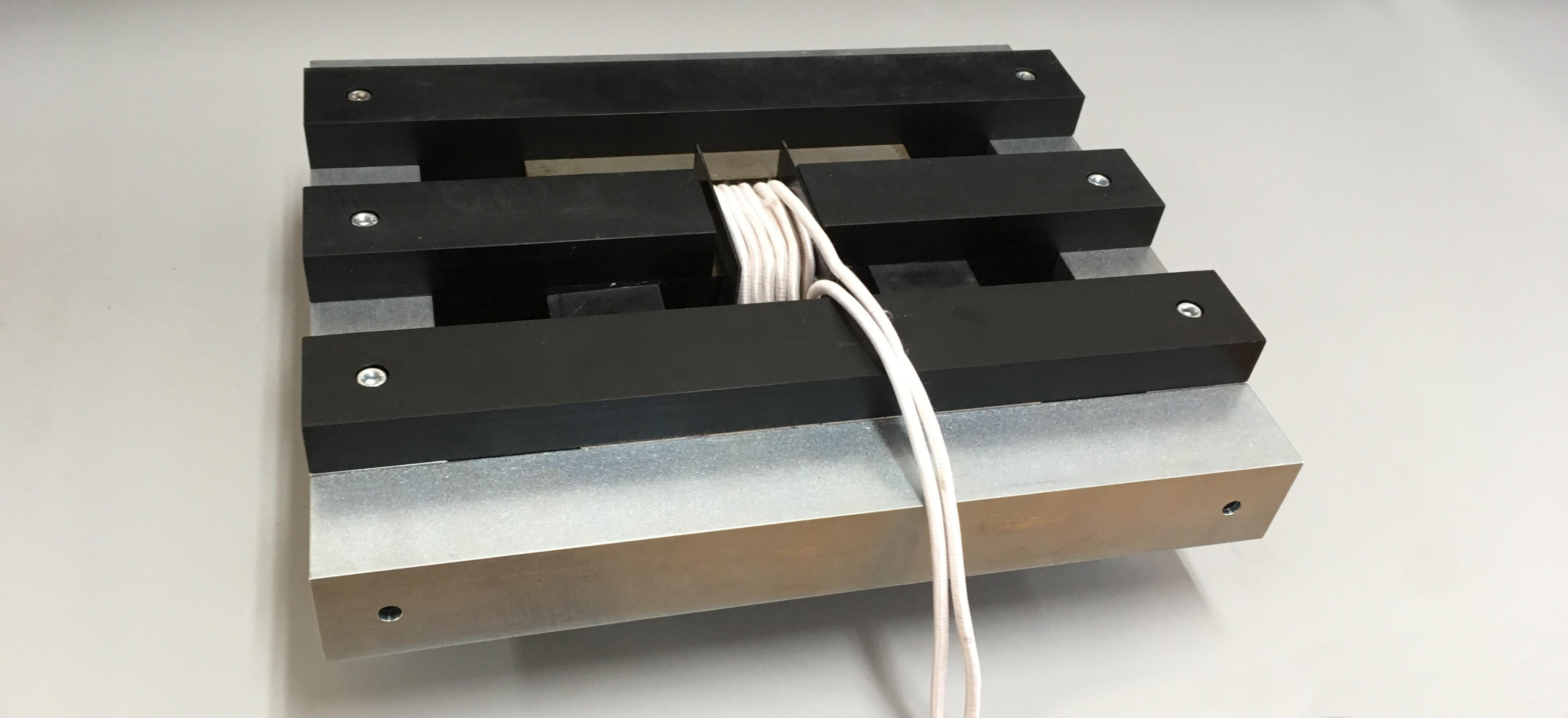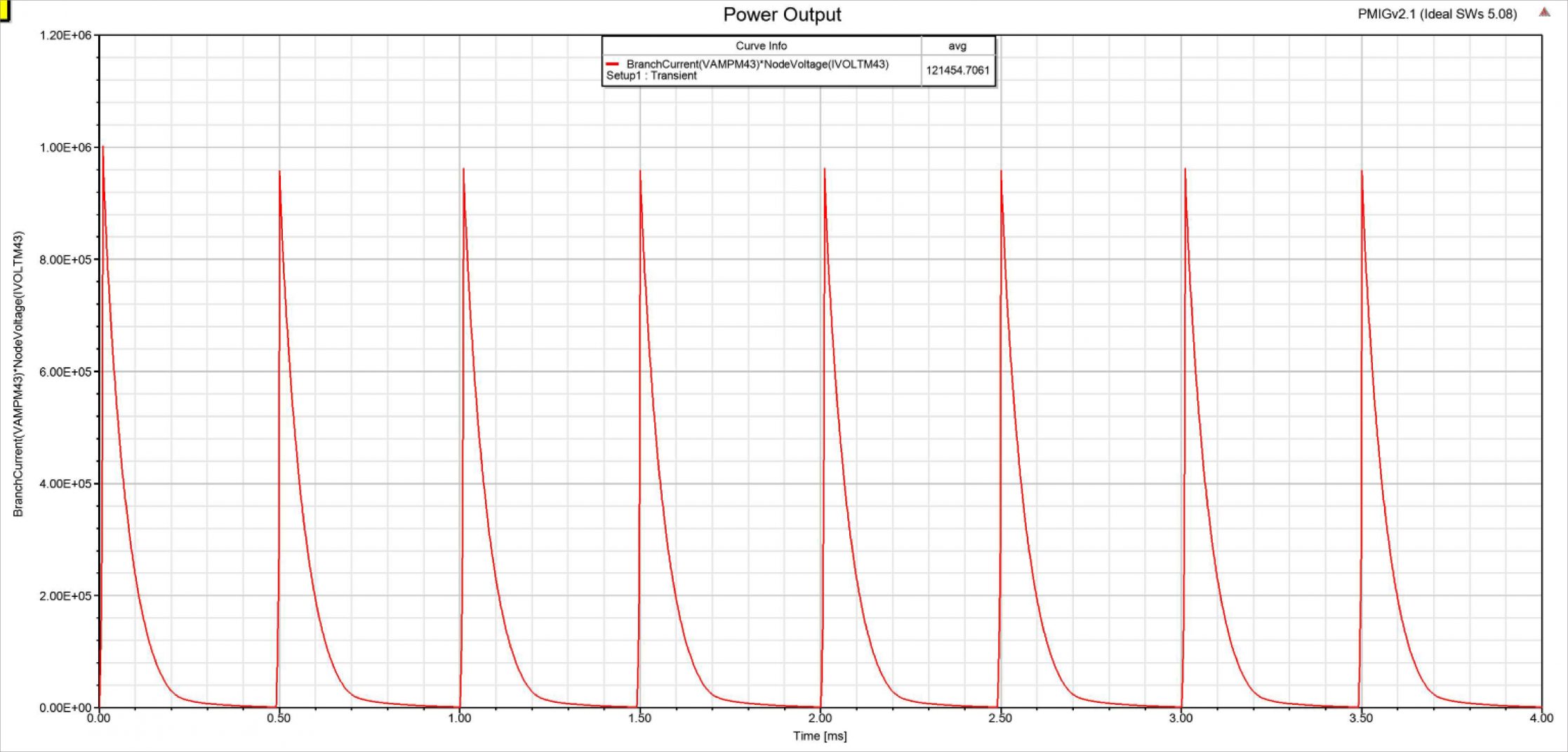PERMANENT FUEL-LESS ELECTRICITY
The Idea
The Principals of Transducing Energy Devices, LLC began the investigation into a fuel-less electricity generating device. The decision was taken to focus on the use of a defined free-energy source.
In 2014, a device was designed based upon using the freely-available energy from permanent magnets and was named the “Permanent Magnet Induction Generator” (PMIG).
In 2018, the investigation into the design of a second and smaller device was initiated. It is the PMO (Permanent Magnet Oscillator) and is the basis for a compact magnetic battery. A magnetic battery based on the PMO would power cell phones, personal computers, etc., and eliminate the need for external charging. This effort has produced two designs that oscillate spontaneously.
The company started with $1.1M in angel seed money and now needs to raise substantial funding.
THE DEVICES
The PMIG Device
Description
The PMIG is a standalone device less than a cubic foot in volume with an estimated weight of 75 lbs (34 Kg). It is self-exciting, nonpolluting, and usable in both moving and stationary applications. Permanent magnets supply the input magnetic flux (energy) for free. Simulations indicate that the PMIG generates electrical power without the input of other external energy such as fuel, sunlight, heat, wind, and chemicals and does so in sufficient quantities to be useable in most energy applications, e.g., automobiles, houses, boats. The below is the design of the virtual prototype with animation:
The below is a photograph of the physical prototype under construction:

Test Results at 1 kHZ
A computer simulation that assumed hypothetical Reluctance Switches with preferred magnetic characteristics produced an average gross output power over 100,000 Watts at 1 kHz before losses from: the soft magnetic material comprising the conductive parts of the magnetic path, the waveform conditioning, and the feedback power siphoned off to operate the Reluctance Switches. The output power waveforms, which of necessity are “spikes,” are shown below

The PMO Device
Description
The PMO is a small stand alone device, (5x2x2cm). It is a permanent magnet oscillator comprised of “hard” and “soft” magnetic materials. With the addition of electrical rectification, it becomes a permanent magnetic battery. The PMO virtual prototypes oscillate spontaneously. A configuation will be published after it is patented.
Test Results
Frequency is determined by the turns on the pickup coils.

THE OPPORTUNITY
The Opportunity
A successful PMIG could decentralize the production of electricity. R&D to date indicates sufficient power to be useable in most energy applications (e.g., automobiles, houses, boats).
A successful PMO solves the battery charging issue for electronic devices.
Invest
Description
The company needs to raise funding. There are opportunities to invest. A private placement offering memorandum (PPOM) is available; send a written request on your company's stationary to:
TRANSDUCING ENERGY DEVICES, LLC
414 South Main St.
Suite 808
Ann Arbor, MI 48104
USA.
INTELLECTUAL PROPERTY
The Intellectual Property
U.S. Patent 9,742,252 was issued on August 22, 2017 for the PMIG with rotary reluctance switches.
U.S. Patent 10,629,367 was issued on April 21, 2020 for the PMIG with motionless reluctance switches.
The company’s patent attorney is John Posa of Ann Arbor, MI.
THE COMPANY
Mission
The Company is a Michigan LLC that was formed in 2005 for the specific purpose of performing R&D for the creation of a fuel-less electrical energy device.
Founders
Theodore C. Annis
- Managing Member of Transducing Energy Devices, LLC
- Magnetics design
Education
- B.S. Physics, Xavier University, Cincinnati, Ohio
- MBA, Xavier University
J. Patrick Eberly, Ph.D.
Education
- Ph.D. Computer Engineering, University of Cincinnati Graduate School, Cincinnati, Ohio
- M.S. Electrical Engineering, University of Cincinnati Graduate School, Cincinnati, Ohio
- B.S. Physics, Xavier University, Cincinnati, Ohio
Advisory Committee
Dr. Lauren Bigelow
CEO, Growth Capital Network
Ann Arbor, MI
Dr. Patrick J. Eberly
EQM Research, Inc.
Cincinnati, OH
Stephen Reading
ADMI
Ann Arbor, MI
Wendolyn Holland
Manager, Holland Consulting, LLC
Washington, DC
FAQs
Frequently Asked Questions
-
The PMIG and PMO sound like perpetual motion machines. I thought that these are impossible.
The PMIG and PMO have no motion; they are solid state. Their energy source, the permanent magnet, is a perpetual energy source. Although there is indeed such a condition as perpetual motion (e.g., heat), it does not apply here.
-
How do you get something from nothing?
The PMIG and PMO have a persistent, non-depleting energy source, the permanent magnet. This is “something” as opposed to no energy source (the “nothing”).
-
What kind of “system” are they?
They are transducers.
Neither is a thermodynamic system. They have no working (multistate) molecular medium such as a gas, a liquid, or a solid. They have no storage medium other than the temporary electromagnetic storage of an output coil. Further, typical closed thermodynamic systems do not contain an energy source. Applying the restrictions of the well-known First law of Thermodynamics to the PMIG and the PMO is not valid.
They are not mechanical systems.
They are magnetic systems with a built-in energy source, the permanent magnet. Their physics is described by Maxwell equations [a]∇· B = 0 and [b]∇x E = -jωµH. Their boundaries cannot be arbitrarily defined as physicists are wont to do when discussing a system. Equation [a] defines the boundary. Equation [b] indicates that “electricity” is generated by changing the magnetic field supplied by the permanent magnet in magnitude or direction or both.
-
It appears that there is more to the permanent magnet than is realized.
Yes. The permanent magnet is more than a simple (magnetic) spring. Although the discussion of its physics is too lengthy for these FAQs, one major point is that it cannot be considered in isolation, but must be considered as part of a larger system that includes its immediate surroundings. This simple and important fact trips up engineers and physicists, as can be seen in the IEEE, Transactions on Magnetics, Vol. 36, No. 1, January 2000 paper by Peter Campbell titled: “Comments on Energy Stored in Permanent Magnets.” In it, he references a statement in a prior discussion on the same subject by Lovatt and Watterson which is: “… there is still some confusion about the energy stored in a permanent magnet.” Campbell does not resolve the confusion because he fails to consider the larger system.
-
Permanent magnets tend to be small and do not seem to have much usable energy. This energy field is conserved, is it not? And… ∇· B = 0.
The PMIG and PMO are conceptually different than a battery with which one thinks of a large, finite amount of energy stored in a volume of material and metered out over time into a load until the battery is depleted.
The PMIG and PMO have a “small” amount of magnetic field energy available at any instant and this energy is never depleted. Remember that power = energy/time. If the magnet’s small and persistently-available energy can be manipulated within a short time period and manipulated repeatedly, the power output is “large.”
-
How does one capture the energy from a permanent magnet?
It is power that is needed. Power cannot be captured from it directly. It is created by changing the state of the permanent magnet system. Such a change directly creates electrical power (second Maxwell equation above).
The PMIG converts its energy source into a power source by shuttling the freely-supplied magnetic field over two different paths thereby producing electricity [V = (-dB/dt)A] which presents as electrical power [Volts X Amps] in the output coil with resistive load that surrounds the common part of the magnetic paths. The resistive load to which the output coil is connected harvests this electrical energy out of the PMIG and the PMO as the power is generated. The permanent magnet accomplishes four functions: 1) it freely and forever produces a magnetic field, which is an energy field; 2) it responds to reluctance changes in the magnetic path with more or less MMF; 3) it freely replaces the energy lost due to eddy currents; and 4) it is a stationary part of the Lenz interaction that takes place between it and the stationary output coil when electrical energy is harvested into the resistive load.
-
I heard that magnets weaken and run down. Is this a problem?
Research indicates that modern permanent magnets may lose 1% or less of their strength over ten years, which is not a problem. Research into the lifespan of a permanent magnet typically yields scanty information, likely because it is not often an issue in magnetic applications. We did learn that the magnets used in heavy lifting applications need to be replaced about every 25 years.
-
How would the PMIG be used in an automobile?
Electric automobiles are a commercial reality, as they were in the early 1900s. They now use lithium-ion drive batteries that are recharged from house electricity, from an on-board gasoline engine/generator, and from charging stations. The PMIG would charge the drive batteries directly and constantly and thereby eliminate both the need for plugging into the house electricity and the on-board engine/generator. The result would be a “completely green automobile.”
-
Is there an opportunity to discuss the physics?
Yes. There are two areas that we’d like you to research before the discussion:
- That the energy limitation ascribed by the First Law of Thermodynamics does not apply to a system, either open or closed, with an energy source.
- Search the science books or literature regarding the energy in a permanent magnet and extract a BHmax plot.